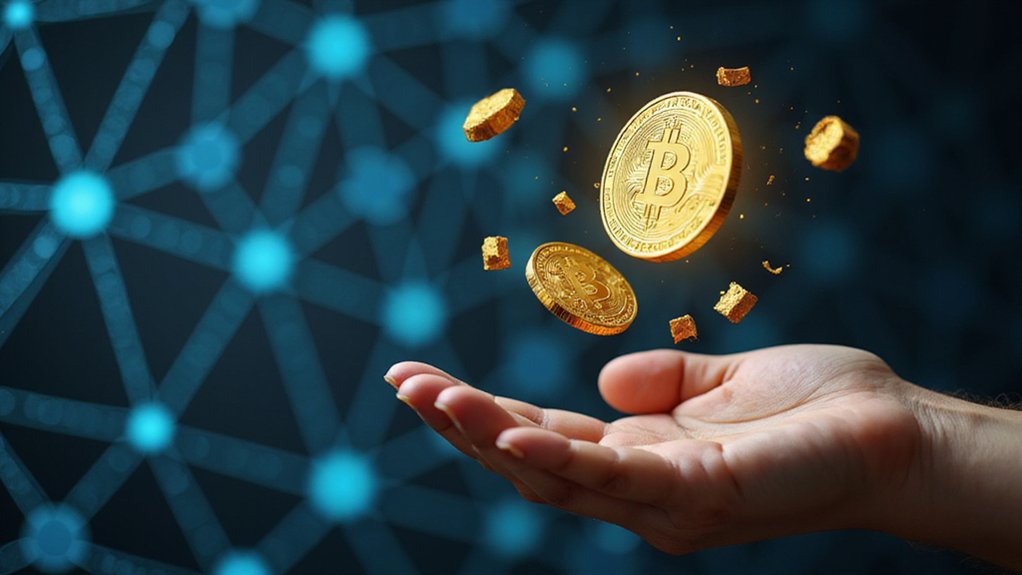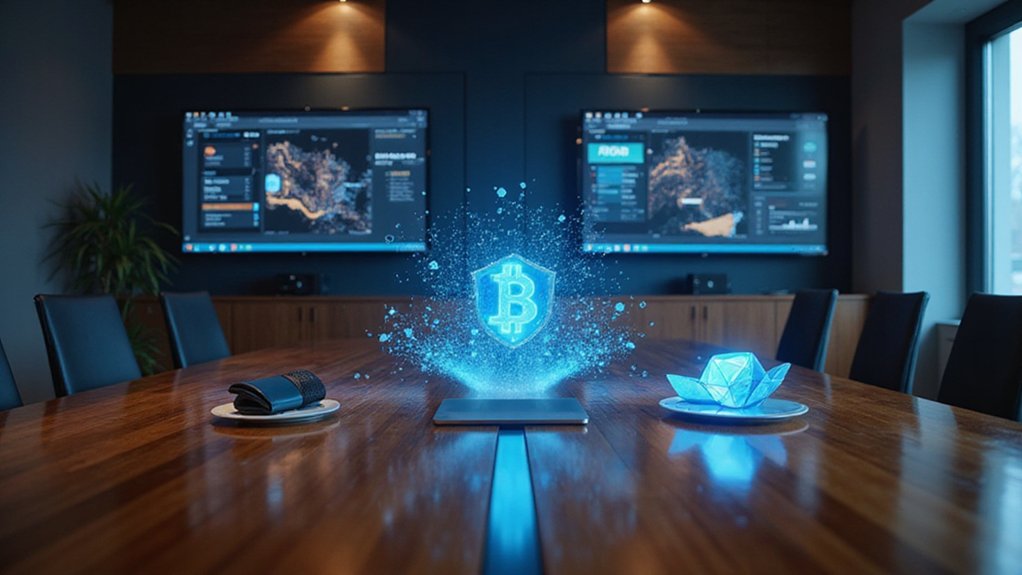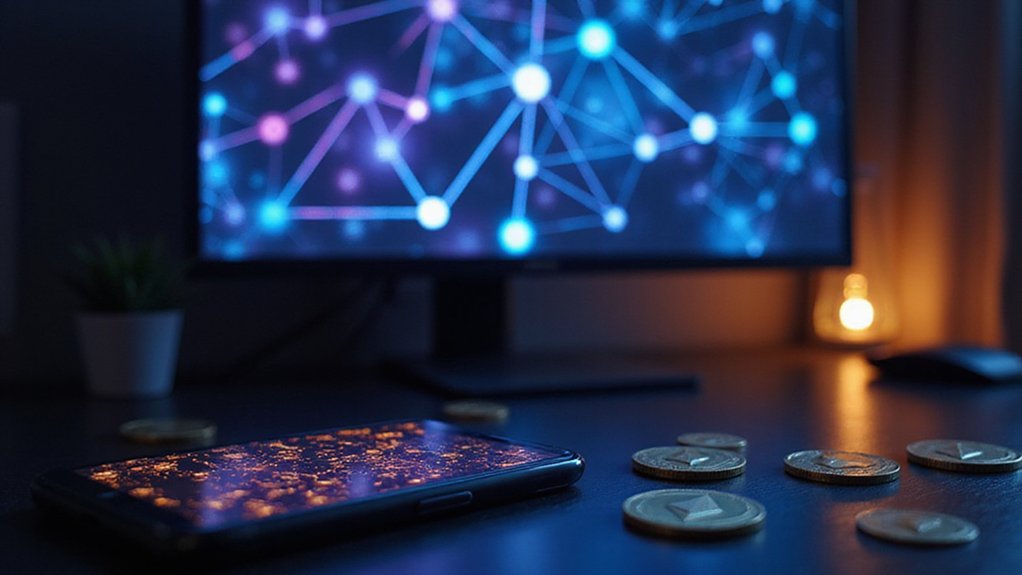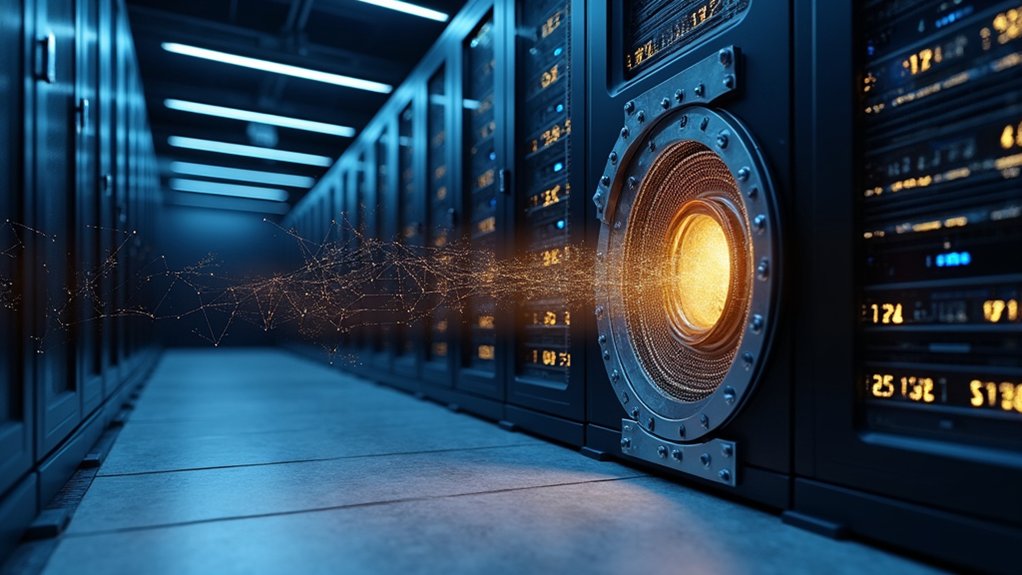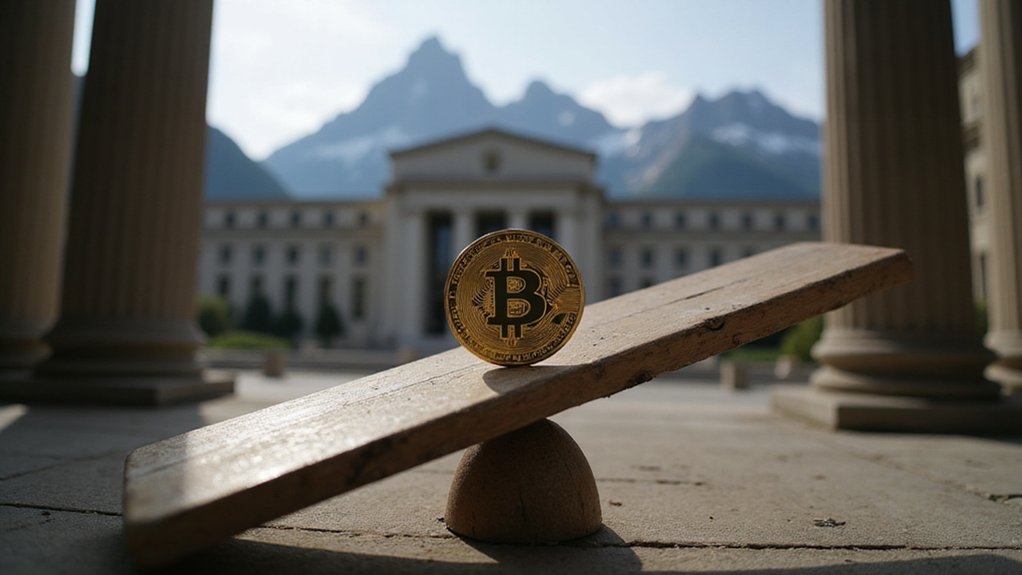Tokenization transforms real-world assets—from Manhattan real estate to Monet masterpieces—into blockchain-based digital tokens representing fractional ownership stakes. Smart contracts automate ownership transfers, dividend distributions, and voting rights while eliminating traditional intermediaries (and their accompanying fees). This process democratizes access to previously exclusive investments, enables 24/7 global trading, and increases liquidity for historically illiquid assets. The mechanics involve asset identification, legal structuring, and deployment onto blockchain networks—complexities that reveal deeper implications.
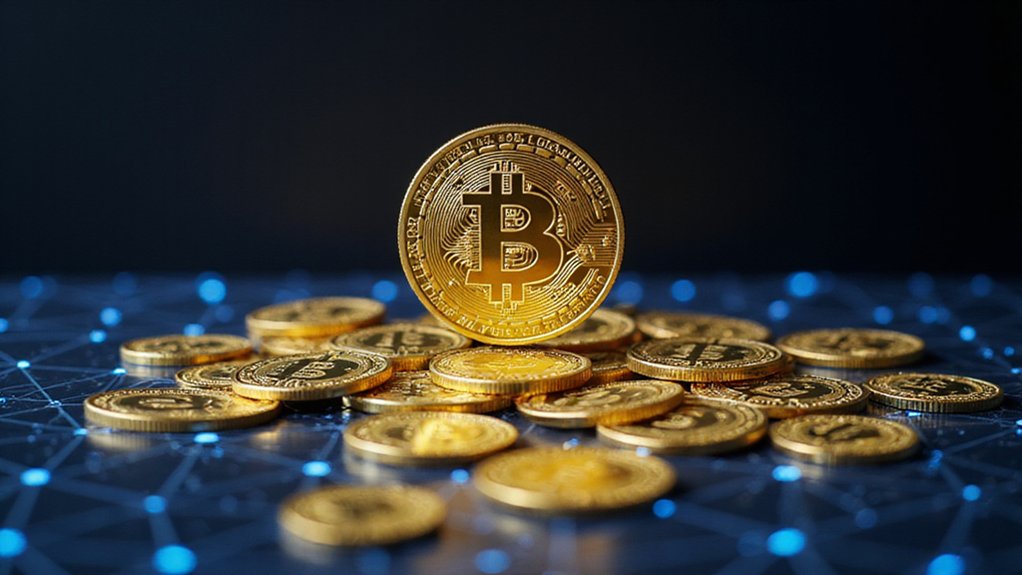
While the financial world has spent centuries perfecting the art of making simple transactions unnecessarily complicated, tokenization in cryptocurrency presents the peculiar proposition of using cutting-edge blockchain technology to actually simplify asset ownership and transfer.
Tokenization fundamentally transforms real-world or digital assets into blockchain-based digital tokens, creating verifiable representations that can be traded, transferred, or fractionally owned with remarkable efficiency. This process applies equally to tangible assets like real estate and commodities, as well as intangible properties including intellectual assets and digital art—essentially democratizing access to investments previously reserved for institutional players with substantial capital reserves.
Tokenization transforms exclusive institutional investments into accessible digital assets, democratizing ownership through blockchain-enabled fractional trading for everyday investors.
The technical implementation begins with asset identification and legal structuring (because even revolutionary technology must genuflect before regulatory frameworks), followed by smart contract deployment that automates ownership rules, transfer conditions, and payment distributions. These self-executing contracts eliminate traditional intermediaries who have historically extracted fees for services that blockchain protocols now perform autonomously—a development that likely causes sleepless nights among certain financial gatekeepers.
Smart contracts represent perhaps the most compelling aspect of tokenization, automatically executing dividends, royalties, or voting rights without human intervention. They define ownership parameters while enabling fractional investment opportunities that transform a $10 million property into 10,000 accessible $1,000 tokens, suddenly making real estate investment available to individuals previously excluded by capital requirements. This approach mirrors the decentralized finance ecosystem, which similarly eliminates traditional intermediaries to enable direct peer-to-peer financial interactions.
The benefits extend beyond mere accessibility. Tokenization enhances liquidity by enabling 24/7 trading on global platforms, increases transparency through immutable blockchain records, and reduces transaction costs by eliminating multiple intermediary layers. Traditional asset transfers requiring weeks of paperwork and substantial fees can occur within minutes at fractional costs. The 24/7 global trading capability of crypto tokens fundamentally enhances market accessibility compared to traditional financial markets constrained by geographic boundaries and operating hours.
However, regulatory compliance remains paramount, with token issuers maneuvering through complex legal frameworks governing ownership rights, investor protection, and cross-border transactions. Different jurisdictions impose varying restrictions on tokenized asset trading, creating a patchwork of regulations that investors must carefully consider. McKinsey analysis suggests the tokenized market cap could reach $2 trillion by 2030, excluding traditional cryptocurrencies.
Ultimately, tokenization represents a fundamental shift toward programmable ownership, where assets become digitally native, globally accessible, and efficiently transferable—transforming centuries-old concepts of property rights into blockchain-enabled financial instruments that operate with unprecedented speed and reduced friction.
Frequently Asked Questions
What Are the Legal Implications of Tokenizing Real-World Assets?
Tokenizing real-world assets creates a fascinating legal labyrinth where traditional property rights collide with digital innovation.
Regulatory bodies struggle to classify these hybrid instruments—are they securities, commodities, or something entirely novel? While progressive jurisdictions like Switzerland have enacted specific legislation, most regions remain bewilderingly unprepared.
The result? Legal recognition varies wildly, compliance requirements multiply exponentially, and cross-border enforcement becomes an exercise in jurisdictional roulette.
How Much Does It Typically Cost to Tokenize an Asset?
Tokenization costs span a rather theatrical range—from $5,000 for simple assets to over $500,000 for complex securities requiring extensive regulatory genuflection.
Most projects settle into the $50,000-$300,000 sweet spot, encompassing blockchain development ($10,000-$100,000), legal compliance ($5,000-$100,000), and the inevitable due diligence theater.
Real estate tokenization platforms alone demand $50,000-$250,000, because apparently transforming physical assets into digital tokens requires considerable financial sacrifice to the blockchain gods.
Can Tokenized Assets Be Traded on Traditional Stock Exchanges?
Tokenized assets can theoretically trade on traditional exchanges, though regulatory frameworks remain frustratingly nascent.
Most exchanges are collaborating with policymakers to develop compliance infrastructure, requiring tokenized assets to satisfy securities registration and disclosure requirements.
The technological hurdles—integrating blockchain platforms with legacy exchange systems, reconciling digital wallets with traditional custody—present formidable challenges.
While fractional ownership and enhanced liquidity offer compelling advantages, security vulnerabilities and jurisdictional uncertainties currently limit widespread adoption.
What Happens if the Underlying Asset Backing a Token Is Destroyed?
When the underlying asset backing a token is destroyed, the tokens typically become worthless digital artifacts—blockchain entries that persist but represent nothing tangible.
Token values plummet as holders lose their claims to the destroyed asset. Smart contracts may include contingency clauses for such scenarios, though compensation depends on insurance coverage and platform guarantees.
The incident often triggers trust erosion, legal disputes, and regulatory scrutiny, highlighting tokenization’s inherent vulnerability to real-world asset risks.
Are There Tax Consequences When Buying or Selling Tokenized Assets?
Yes, purchasing tokenized assets establishes cost basis and triggers holding periods for capital gains calculations, while sales generate taxable events requiring gain or loss recognition.
Tax authorities increasingly scrutinize these transactions, demanding meticulous record-keeping despite the decentralized nature that traders mistakenly believe provides anonymity.
Regulatory classification—whether security, commodity, or property—dictates specific tax treatment, and cross-border transactions compound complexity with additional reporting obligations that many investors discover too late.
